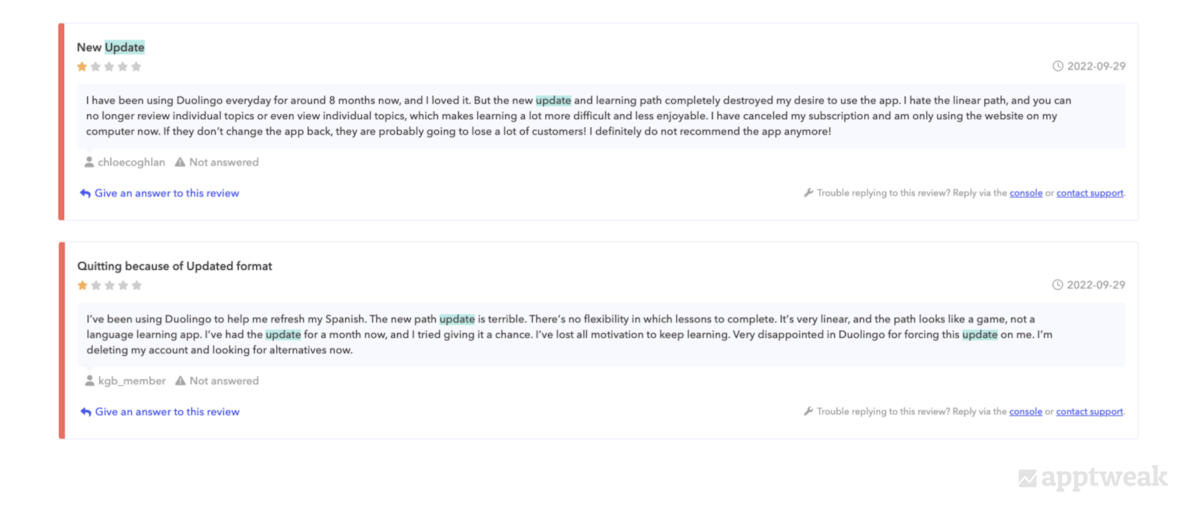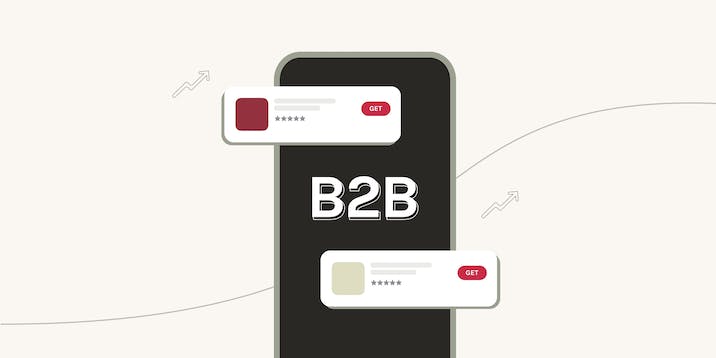
4 Tips to Monitor & Manage App Reviews & Ratings
Ratings and reviews are an indispensable part of ASO and play a major role in user conversion.According to Apptentive, 50% of mobile users will bypass downloading an app if the app has a 3-star rating. For a 2-star rating, this number drops to 85%. For free apps, 77% of people report that they read at least 1 review before downloading an app. For paid apps, this number jumps to 80%.
Due to the impact that ratings and reviews can have on your app, it is important to not only manage them properly but also assess the value you can gain from them. Whether positive or negative, you can learn insightful information about your own app from reviews.
In this blog, we will explain how to monitor app reviews and ratings to drive conversion.
Tips to manage app reviews and ratings
1. Assess what people are talking about most
Often, reviews can be useful to give you valuable insight into what customers think about your app. One way to leverage this information is to create a sentiment word cloud. A sentiment word cloud maps those keywords that are mentioned most often in your app’s reviews. This helps capture what your users are talking about most frequently when referring to your app.
With AppTweak’s Sentiment Analysis section, you can view the most repeated user opinions to really understand what was said about your app in just a few clicks.
Let’s look at Rosetta Stone as an example.

Here, we can see a word cloud with the top 25 repeated keywords and keyword phrases from Rosetta Stone’s reviews. The dark green words are used in mostly positive reviews; the light green in both positive and neutral reviews; and the orange words can be found in positive, neutral, and negative reviews. One of the most-repeated keywords (colored in dark green) here is “learning,” which helps us infer that users like the learning strategies used by the app, and/or the app has been helping them to learn successfully. To test our assumptions, on AppTweak, we further filtered the reviews using the keyword “learning.” This information, which helps you analyze what it is that users like/dislike about your app, is highly beneficial when making app updates.

2. Don’t ignore negative reviews about your app
Public reviews tend to be polarizing in either being overly negative or very positive, but they provide useful insights into what users like and dislike, as well as what new features users would like to see. That’s why you should never ignore negative reviews left for your app, as these leave you clues about how disgruntled users feel. Negative reviews can be difficult to read, but these can help you make improvements to your app in order to keep users happy.
Let’s consider the example of the language learning app Duolingo.

On AppTweak, we noticed that over the last 6 months, Duolingo received many moderate and negative reviews, as indicated by the red, yellow, and green color coding. To understand the cause behind the negative reviews, we looked at the most-repeated words in red – “new” and “update” – and found that users were not happy with an update Duolingo made within the past 6 months.

To verify this inference, we looked at the reviews from the last 6 months and found that there were indeed some time intervals when Duolingo received a heightened number of negative reviews. In fact, these spikes in negative reviews came directly after version updates on August 15 and October 24. This is a clear indicator that there were changes made in these updates that were not well-received by users. To find out what these pain points are, we can look at the negative reviews that Duolingo received during these spikes.

By running a topic analysis, our data science team can dig into this further to identify common review topics and visualize their evolution through time. A topic analysis follows a similar structure as a sentiment word cloud, but is able to filter out keywords that don’t carry a purpose, such as filler words. For the purpose of this blog, our data science team found common review topics for Duolingo:
Check out how you can leverage our data science to run a similar analysis for your app or game

- Users were complaining about updates made to Duolingo since the updates made on August 15 and October 24, 2022. The most common pain points identified were a new layout and the learning format. Our data science team identified the most commonly recurring keywords with value, such as update, new, path, layout, change, and format. When assessing Duolingo’s recent UX updates, we found that they implemented a new learning path layout, which greatly changed the user experience. However, when we checked the reviews, we found that many users did not find this change to be an improvement.

- We found another pain point for Duolingo’s users, but this one was from 2019. There was an influx of negative reviews mentioning a “hearts” system, which is similar to “lives” in a video game. These reviews also came in a surge following an update late in 2019, and decreased through 2020 and 2021.
In short, negative reviews are just as important to manage as positive ones. It gives you an opportunity to fix the things that users are not happy with and to detect interesting topics.
Uncover interesting insights to improve how users perceive your app
3. Personalize your responses when replying to reviews
Responding to reviews (good or bad) is important to maintain a strong relationship with your users. About 57% of users claim they wouldn’t be very likely to use a product or a service that doesn’t care to respond to reviews.
Responding to reviews can improve your conversion rate, as the majority of consumers report that they would be more likely to install an app if the reviews have been responded to. In addition, don’t forget that users can edit their reviews. By responding to negative reviews and resolving the issues, you may find that the users will appreciate the effort enough to edit their reviews and increase their star ratings.
Check out these best practices when replying to app reviews
In addition to responding to reviews, it’s ideal to personalize your responses. It’s recommended to reply with a user’s name in the response and to thank them for taking the time to leave a review, whether it’s a 1-star review or a 5-star review. Let’s look at the language app Busuu as an example. This personalized response mentions the user by name, thanks the user for writing a review, apologizes for any inconvenience, assures the user that the issue is being resolved, and offers support in the meantime.

4. Optimize your rating and review prompts
You need to plan how to help your happiest users rate your app. A strategy to combat negative review bias is essential because your satisfied users are unlikely to go out of their way to organically rate your app. While happy users rarely take the time to write a glowing review, upset users immediately turn to app store reviews as a place to vent, ask for support, and warn other users about issues within your app.
A great strategy to minimize negative reviews is to set up in-app prompts that ask users for feedback at an optimal time.

Before setting up in-app ratings prompts for user feedback, consider these key points:
- Don’t ask for a rating or review at onboarding. Give users a chance to familiarize themselves with your app first. To increase the likelihood of receiving a positive rating or review, consider the best place to ask for feedback. This could be when a user has completed a level of your game, when a user has placed a successful order, or after rewards points have been redeemed.
- Avoid interrupting people. Asking for feedback when a user is in the middle of gameplay or completing an important task can be annoying and even cause them to leave a lower rating. Setting prompts to appear during breaks in gameplay or after a task is completed is less intrusive and can help you to receive more honest feedback.
- Don’t pester your users. Asking users for feedback too frequently can diminish their opinion of your app. Try to wait at least a couple of weeks between prompts, so users don’t feel annoyed when leaving a rating or review.
ASO with AppTweak Course & Certification
Authenticate your ASO and AppTweak knowledge with a certification!
Get certified*Available to Power and Enterprise plans only.
TLDR
Ratings and reviews are a goldmine of customer feedback for apps and games on the app stores. Monitoring and managing your app reviews and ratings can help you gauge valuable feedback from your consumers as well as maintain a strong relationship with your users.
- Assess popular topics to discover what users like and dislike about your app. This gives you the ability to continue making improvements to your app/game.
- Negative reviews are just as important as positive ones. Negative reviews allow you to learn about users’ pain points so you can solve their frustrations.
- Try personalizing your responses when replying to a review. Engaging with a user will make them feel valued and increase their trust in you.
- Optimize rating and review prompts to encourage users to give feedback. However, be careful not to repeat the prompt in a manner that could irritate users.
Want to learn more about optimizing your reviews and ratings? Schedule a demo today!



 Emily Sugrue
Emily Sugrue
 Mariia Chernoplyokova
Mariia Chernoplyokova


 Sarah B. Touimi
Sarah B. Touimi
 Yuliya Tsimokhava
Yuliya Tsimokhava